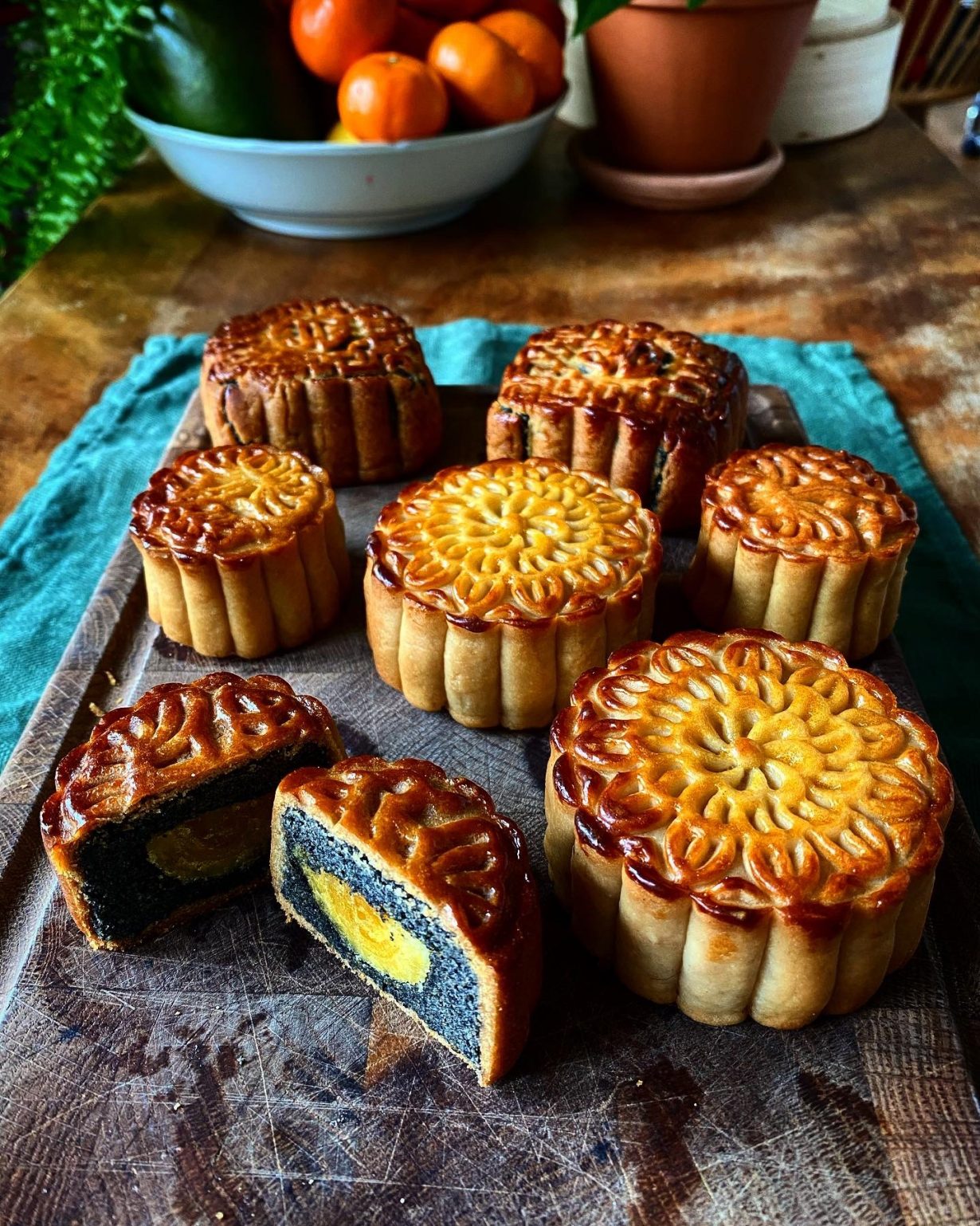From the cosmic gods of Chinese folklore to aiding revolutionaries, past and present, finding hidden messages within the seasonal delicacy

Mid-Autumn Festival (中秋節 jung-chau jit) falls on the 15th day of the 8th month in the lunisolar calendar, to coincide with the Harvest Moon. This year the festival arrives on 21 September, which we celebrate by eating Mooncakes (月餅 yuht beng).
The Harvest Moon is a particularly bright full moon that rises shortly after sunset which, before electricity, would allow farmers to gather their crops for a little while longer under the moonlit sky. Mooncakes are traditionally filled with lotus seed paste, red bean paste or mung bean paste, and contain a whole salted duck egg yolk which symbolises the moon (though there are various types of the cake that are made without these). Here are some with black sesame filling.
The Mid-Autumn festival finds its roots in the custom of giving thanks and praying to the old cosmic gods of Chinese folklore, dating back to
the Shang Dynasty (1600–1046BCE), and in particular to Taijam Noengnoeng (the Lunar Empress, or, the Great Yin Mother) who was thought to grant wishes and heal sick children. But the folktale of the moon goddess Seuhng Ngo (Chang’e in Mandarin), which was popularised during the Tang Dynasty, has become the primary story connected to moon worship during the Mid-Autumn Festival. There are variations of the tale, including versions that tell of Seuhng Ngo’s curiosity and greed, or of her selflessness in the face of her tyrannical husband. The kinder story goes like this: the Earth was once blighted by ten suns. Seuhng Ngo’s husband Hou Yi was a skilled archer
in the Imperial Guard and shot down nine of the suns to save the scorched land. As a reward, he was given an elixir of immortality, which he hid away. One day, Seuhng Ngo discovered that his apprentice planned to find and steal Hou Yi’s elixir for himself. To stop him, Seuhng Ngo consumed the immortality potion, which caused her to float up into the sky. Rather than ascend fully, Seuhng Ngo managed to stop herself at the moon so she could remain as close as possible to Hou Yi, and keep watch over him. Upon finding out that his wife could no longer return, Hou Yi would place Seuhng Ngo’s favourite fruits and pastries outside as a tribute to her.
Another story relating to mooncakes is that these pastries allowed secret messages to be smuggled between Ming revolutionaries during the Yuan dynasty which resulted in the overthrow of Mongolian rulers. These messages were hidden either inside or on the surface patterns of the mooncakes.
In 2019 Hong Kong family run bakery Wah Yee Tang (華爾登麵包餅店) and the larger chain Taipan kicked up a storm when they began to sell mooncakes stamped with protest messages. These included phrases like ‘Hongkonger’ (香港人), ‘add oil’ (加油) and ‘be water’ (如水) – the last inspired by Bruce Lee and which came to describe the fluid, flexible and unpredictable methods employed by HK protestors.
Ingredients
Sugar syrup
Lye water
Peanut oil
Plain flour
Black sesame
Caster sugar
Butter
Glutinous rice flour
Salted egg yolks
Egg yolk